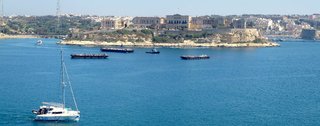

MALTA, 27TH APRIL TO 1st MAY, 2012 (click on any photo to see a larger image)
Ryanair from Luton
Friday 27th dep 06.40 arr 11am Flight FR3882
/ return Tues 1st 11.15am arr 1.30 Flight FR3883
Be warned - they are very strict on weight
and size - to the extent of having to put
handbags and all carry goods in the suitcase
as you are only allowed one bag weighing
no more than 10kg. Watch it if you have a
bottle of water as it may tip the sales!
Airport Transfer
Bus X4 and X5 - every15 mins to main bus
terminal (takes 22 mins) and costs $2 / Taxi is €15 from
airport, however, we were ripped off on the
return with a charge of $25 (taxi driver
said it was more because it was a bank holiday)
Hotel Phoenicia 5*
An ageing old hotel with great views over
the harbour (if you have a room facing that
direction). Excellent comprehensive breakfast.
Free wifi in Palm lounge and dining room.
Outdoor pool / gym and hot tub are all a
long walk through the gardens of the hotel.
You get one free bottle of water upon arrival
and pay for any others – not really
a 5* service!
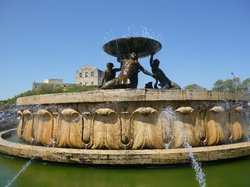 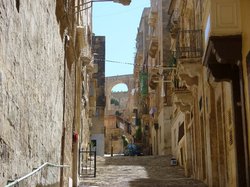 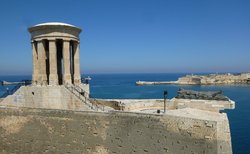 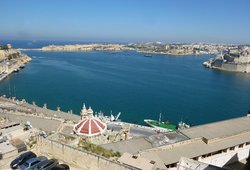 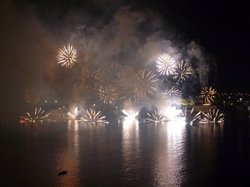 |
FRIDAY
Valletta
Explored Valetta - lunch at Kantina Café €31 for lunch, glass wine & beer
(excellent, large salad)
Triton Fountain
Triton the mythological Greek god is known
as the messenger of the deep with an upper
body of a man and tail of a fish. He is the
son of Poseidon, god of the sea and Amphitrite
goddess of the sea. Triton's special
attribute was a twisted conch shell which
he blew like a trumpet to calm or raise the
waves. The Triton Fountain, designed by Maltese
sculptor Vincent Apap in 1959, is a stunning
piece of local art situated in the centre
of Malta’s main bus terminus.
Republic Street – the main street, pedestrianized
with lots of shops and key sights such as
the Co-Cathedral, the National Museum of
Archaeology, Palace Square, the Palace, and
more.
Strait Street - maybe the street with the most history
in Valletta because of the 'colourful
scenes' until it's recent past up
to 30 years ago. It was the place where duels
took place in the days of the knights and
bar fights during the British rule.
St John’s Co-Cathedral
Built by the Order of the Knights Hospitaller
of St John between 1573 and 1577, this church
was designed by Girolamo Cassar, a Maltese
architect known for designing many of the
outstanding buildings in Valletta. Austere
from the outside but impressive internally,
this magnificent building houses, among other
highlights, Caravaggio’s ‘The
Beheading of John the Baptist’ –
a monumental canvas and the only work the
artist signed.
Upper and Lower Barrakka Gardens
The Upper Barrakka Gardens was built as a
private garden for the Italian Knights in
the 17th Century and offers a superb
panorama of the Grand Harbour.
Valletta Waterfront and Grand Harbour
The massive bastions wrap themselves protectively
around the city and are cited as being among
the most fascinating fortifications in Europe.
The bastions were completed within five years,
an impressively short length of time considering
the extensive perimeter, using huge stones
and primitive tools. Often there were more
than 8000 workers a day. Within the thick
walls are tunnels, secret passages and storage
vaults.
The best sight of the fortified city is from
the sea – there are frequent harbour
cruise where boats trace the rocky coastline
and the Valletta bastions rise powerfully
high from the Mediterranean Sea. By night,
these are floodlit to perfection, a stunning
monument to the past, a spectacle of beauty
for the present.
Ambrosia Restaurant – small cosy restaurant with
excellent ambiance, service and food.
Valletta Grand Harbour Fireworks
Pyro-musical display by Pirico Fireworks
(Italy)
A unique demo display by Ugo Lieto Fireworks
(Italy)
A grandiose pyro-musical finale by Lourdes
Fireworks Factory (Qrendi Malta), winners
of the Malta International Fireworks Festival
2011. |
 |
SATURDAY
Blue Grotto – Buses X4 and X5 go to airport and
then 201 (hourly) from the airport to the
Blue Grotto. The Blue Grotto is an area famous
for its rocky coastline, natural caves and
turquoise blue waters. It’s best to
go in the morning as the sea is, apparently,
a better colour. You take a boat trip from
Weid iz-Zurrie – there are many boats
available.
The boats enter under an immense arch into
a 140ft high cave cut into the rock face.
The system consists of six caves carved by
years of relentless pounding by the sea,
of which the Blue Grotto is the largest and
most impressive. The water seems an impossible
cobalt colour as the sky reflects off the
white sand bottom. The caves sparkle both
with blue reflections of the sea and orange,
purple and green of the various minerals
present in the rocks. The boat trip is supposed
to take about 30minutes but unfortunately,
our boatman seemed to rush the trip and it
was over in less than 20 minutes. You can
also walk along the top of the cliff and
look down to see the coastline.
We then hoped on the Malta Sightseeing South Bus Tour €15 and got off at the next stop
for the Mnajdra Megalithic Temples.
Mnajdra and Hajar Qim Megalithic Temples 4km NW of Qrendi
Both are around 3,600 years old. The
Mnajdra Temples are 600 metres down a stone
path from Hajar Qim Temples. Both are protected
under tentlike structures and both interesting
to see
Hopped on the bus again to Sliema. Sat in
the harbour Café Oasis - €21 lunch, glass wine &
beer (excellent food, large salad)
Harbour Boat Tour – our hop on/off bus ticket came with
a free harbour cruise. It was excellent and
well worth it. I feel that the boatmen are
missing out by not offering drinks to buy.
The harbour boat tour goes inside Sliema
Creek, around Monoel Island to Lazzaretto
creek, better known as the yacht Marina,
round Ta’ Xbiex to Msida and Pieta
creeks, cruising by the battlements and fortifications
surrounding Valletta and Floriana into the
Grand Harbour and then returning past the
Three Cities which is the description of
the three fortified cities of Vittoriosa,
Cospicua & Senglea. (They are called cities, but actually they
are like small towns!)
Marsaxlokk is a very pretty, traditional fishing village
in the SE and one of the oldest ports in
Malta. The bay is is memorable for the many
colourful, traditional fishing boats called
luzzu. The painted eyes on these luzzus are
believed to protect the boats from danger.
These boats are thought to have been used
by Maltese sailors since Phoenician times
800 BC. There is a plethora of seafood restaurants
at very reasonable prices.
Tartarun Fish, Marsaxlokk - excellent fresh fish €68.50
for 2 with wine
The bus 81 takes 38 mins and departs every
20 mins. |
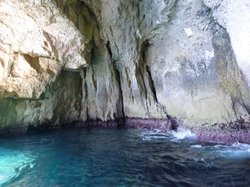 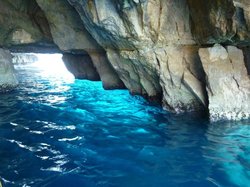 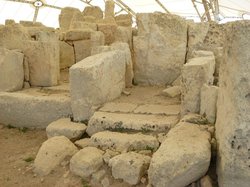 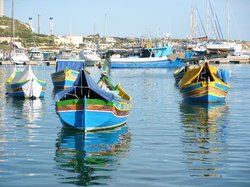 |
 |
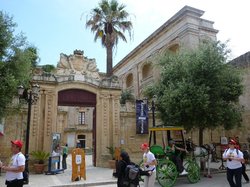 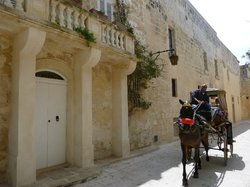 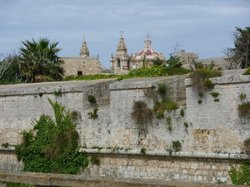 |
SUNDAY
Mdina
Mdina is one of Europe’s finest examples
of an ancient walled city and extraordinary
in its mix of medieval and Baroque architecture.
Stroll through the medieval narrow streets
of sleepy, charming Mdina, which has changed little in the last
1000 years. Mdina has been inhabited since
at least the Bronze Age. The Phoenicians
established a settlement here, and the Romans
a city.
Originally called Maleth, Mdina (arabic for
fortified place) gained its present name
around 1000 AD when Malta was occupied by
Arabs who built 19ft defensive walls around
the city. The new city walls left many of
the poorer population living outside of the
new defences and this area became known as
Rabat (arabic for suburb). The Normans, who
conquered the island in 1091, thickened the
city's defensive walls and widened its
moat, firmly establishing Mdina has the country's
capital, which it remained until Vittoriosa,
and later Valletta, were built in the 16th
century. Mdina became known as the silent
city after most of the population left to
live in the new capital Vittoriosa. Today
the city has only a population of around
300 people, though the neighbouring town
of Rabat has a population of 13,000.
The Mdina Experience is a 25 minute audio
visual spectacular and well worth seeing.
It traces the history of Malta’s former
capital, from its foundation to the present.
Lunch at the Xara Palace Hotel was excellent
– lunch, ½ carafe wine, coffee
€26.30
The buses 51, 52 or 53 take 31 mins and depart
every 20 mins
Chez Cyrille,Cordial Restaurant – small and hot (I can imagine that it gets
too hot and stuffy in the mid summer) . Good
fresh fish. €156 for four (fresh fish, desert,
wine)
Valletta Grand Harbour Firework Competition
first night
Pyro-musical display by Apogee Fireworks
of Canada.
Pyro-musical display by Phoenix Fireworks
of the UK.
Pyro-musical display by Jost Fireworks of
Austria. (third) |
 |
MONDAY
Casa Ricca Piccola
Built in the 16th century, it is one of the
last remaining unconverted palaces in Malta
that is still lived in today by a Maltese
noble family - The 9th Marquis and Marchioness
de Piro. The Palace contains over 50 rooms,
the majority of which are open for viewing.
It is steeped in history, old paintings and
antiques. Our guide was excellent and we
met with the owner who was showing a group
of school children around.
Palace of the Grand Masters
Dominating the Palace Square, the Grand Master's
Palace has always been the house of government
in Malta, first by the knights, then the
British and now it hosts the President’s
office. You can visit it when parliament
is not in session.
In the interior of the palace is the famous
Council Chamber, adorned with valuable Gobelins
tapestries woven in France for Grand Master
Ramón Perellos y Roccaf. The other
rooms and passages of the palace are furnished
with art objects, old coats of arms and armour.
The former Hall of the Supreme Council of
the Knights has fine frescoes and the Hall
of the Ambassadors, where portraits of Grand
Masters and European rulers hang.
On the basement floor is the Armoury, one
of the largest collections of its kind in
the world, though reduced to a fraction of
its former size by the depredations of the
French. Among its principal treasures are
a suit of armour made in Milan for the Grand
Master, Adrien de Wignacourt (1690-97) and
a full-length panoply made for Grand Master
Martin Garzes by Sigismund Wold of Landshut.
A ticket gives you entrance to the Palace
and the Armoury. There are only four rooms
to be seen in the Palace and they didn’t
have any furniture when we were there so
it all looked a little sparse.
Marsaxlokk - Café du Paris for lunch (glass of white wine €0.70,
small beer €1. Four of us had fresh
king prawns for 3 and fresh tuna for 1, ice-cream
and wine = €88)
British Hotel dinner and then on the roof terrace to watch
the fireworks. Stunning view over the harbour
but they could do with a better chef. 3 course
set menu dinner + carafe of wine & bottle
of water €75
Valletta Grand Harbour Firework Competition
second night
Pyro-musical display by St Michaels Fireworks
Factory Lija, Malta. (winner)
Pyro-musical display by Mirnovek Fireworks
of Croatia. (second)
Pyro-musical display by Surex Fireworks of
Poland.
|
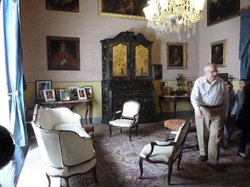 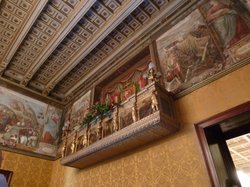 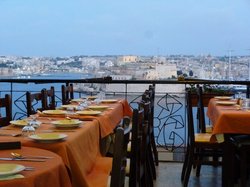 |
 |
HISTORY & CULTURE
Malta is steeped in history - mainly baroque
architecture with buildings made out of sandstone.
The people and culture originates from Arabic,
Italian and English. The local language is
Maltese yet they all speak English. They
drive on the left and use UK electrical sockets.
FOOD & WINE
Good restaurants with plenty of fresh fish
at reasonable prices. Good quality food.
Maltese wine – they don’t have
much area to grow grapes and not a lot is
made so it is for domestic consumption only
– none is exported.
BUSES
Aviva buses were always late, even from the main bus
station. But, very plentiful and very cheap
at only €2.60 for a day’s unlimited
travel. Bus drivers are very friendly and
courteous. Bus routes
|
|
|
